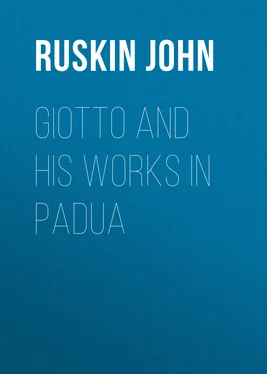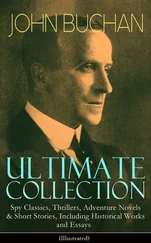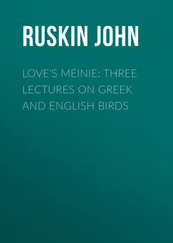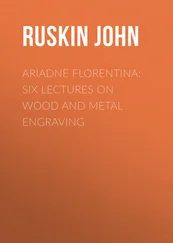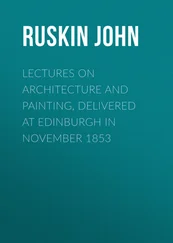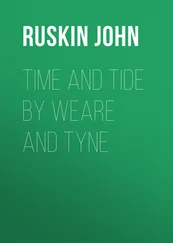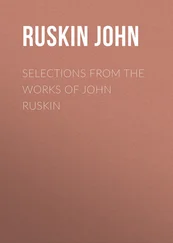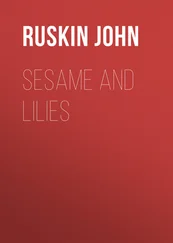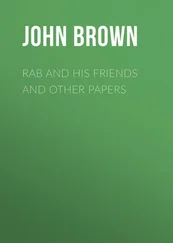John Ruskin - Giotto and his works in Padua
Здесь есть возможность читать онлайн «John Ruskin - Giotto and his works in Padua» — ознакомительный отрывок электронной книги совершенно бесплатно, а после прочтения отрывка купить полную версию. В некоторых случаях можно слушать аудио, скачать через торрент в формате fb2 и присутствует краткое содержание. Жанр: foreign_antique, foreign_home, literature_19, visual_arts, на английском языке. Описание произведения, (предисловие) а так же отзывы посетителей доступны на портале библиотеки ЛибКат.
- Название:Giotto and his works in Padua
- Автор:
- Жанр:
- Год:неизвестен
- ISBN:нет данных
- Рейтинг книги:3 / 5. Голосов: 1
-
Избранное:Добавить в избранное
- Отзывы:
-
Ваша оценка:
- 60
- 1
- 2
- 3
- 4
- 5
Giotto and his works in Padua: краткое содержание, описание и аннотация
Предлагаем к чтению аннотацию, описание, краткое содержание или предисловие (зависит от того, что написал сам автор книги «Giotto and his works in Padua»). Если вы не нашли необходимую информацию о книге — напишите в комментариях, мы постараемся отыскать её.
Giotto and his works in Padua — читать онлайн ознакомительный отрывок
Ниже представлен текст книги, разбитый по страницам. Система сохранения места последней прочитанной страницы, позволяет с удобством читать онлайн бесплатно книгу «Giotto and his works in Padua», без необходимости каждый раз заново искать на чём Вы остановились. Поставьте закладку, и сможете в любой момент перейти на страницу, на которой закончили чтение.
Интервал:
Закладка:
John Ruskin
Giotto and his works in Padua / An Explanatory Notice of the Series of Woodcuts Executed for the Arundel Society After the Frescoes in the Arena Chapel
ADVERTISEMENT
The following notice of Giotto has not been drawn up with any idea of attempting a history of his life. That history could only be written after a careful search through the libraries of Italy for all documents relating to the years during which he worked. I have no time for such search, or even for the examination of well-known and published materials; and have therefore merely collected, from the sources nearest at hand, such information as appeared absolutely necessary to render the series of Plates now published by the Arundel Society intelligible and interesting to those among its Members who have not devoted much time to the examination of mediæval works. I have prefixed a few remarks on the relation of the art of Giotto to former and subsequent efforts; which I hope may be useful in preventing the general reader from either looking for what the painter never intended to give, or missing the points to which his endeavours were really directed.
J.R.GIOTTO AND HIS WORKS IN PADUA
Towards the close of the thirteenth century, Enrico Scrovegno, a noble Paduan, purchased, in his native city, the remains of the Roman Amphitheatre or Arena from the family of the Delesmanini, to whom those remains had been granted by the Emperor Henry III. of Germany in 1090. For the power of making this purchase, Scrovegno was in all probability indebted to his father, Reginald, who, for his avarice, is placed by Dante in the seventh circle of the Inferno , and regarded apparently as the chief of the usurers there, since he is the only one who addresses Dante. 1The son, having possessed himself of the Roman ruin, or of the site which it had occupied, built himself a fortified palace upon the ground, and a chapel dedicated to the Annunciate Virgin.
This chapel, built in or about the year 1303, 2appears to have been intended to replace one which had long existed on the spot; and in which, from the year 1278, an annual festival had been held on Lady-day, in which the Annunciation was represented in the manner of our English mysteries (and under the same title: "una sacra rappresentazione di quel mistero "), with dialogue, and music both vocal and instrumental. Scrovegno's purchase of the ground could not be allowed to interfere with the national custom; but he is reported by some writers to have rebuilt the chapel with greater costliness, in order, as far as possible, to efface the memory of his father's unhappy life. But Federici, in his history of the Cavalieri Godenti, supposes that Scrovegno was a member of that body, and was assisted by them in decorating the new edifice. The order of Cavalieri Godenti was instituted in the beginning of the thirteenth century, to defend the "existence," as Selvatico states it, but more accurately the dignity, of the Virgin, against the various heretics by whom it was beginning to be assailed. Her knights were first called Cavaliers of St. Mary; but soon increased in power and riches to such a degree, that, from their general habits of life, they received the nickname of the "Merry Brothers." Federici gives forcible reasons for his opinion that the Arena Chapel was employed in the ceremonies of their order; and Lord Lindsay observes, that the fulness with which the history of the Virgin is recounted on its walls, adds to the plausibility of his supposition.
Enrico Scrovegno was, however, towards the close of his life, driven into exile, and died at Venice in 1320. But he was buried in the chapel he had built; and has one small monument in the sacristy, as the founder of the building, in which he is represented under a Gothic niche, standing, with his hands clasped and his eyes raised; while behind the altar is his tomb, on which, as usual at the period, is a recumbent statue of him. The chapel itself may not unwarrantably be considered as one of the first efforts of Popery in resistance of the Reformation: for the Reformation, though not victorious till the sixteenth, began in reality in the thirteenth century; and the remonstrances of such bishops as our own Grossteste, the martyrdoms of the Albigenses in the Dominican crusades, and the murmurs of those "heretics" against whose aspersions of the majesty of the Virgin this chivalrous order of the Cavalieri Godenti was instituted, were as truly the signs of the approach of a new era in religion, as the opponent work of Giotto on the walls of the Arena was a sign of the approach of a new era in art.
The chapel having been founded, as stated above, in 1303, Giotto appears to have been summoned to decorate its interior walls about the year 1306,—summoned, as being at that time the acknowledged master of painting in Italy. By what steps he had risen to this unquestioned eminence it is difficult to trace; for the records of his life, strictly examined, and freed from the verbiage and conjecture of artistical history, nearly reduce themselves to a list of the cities of Italy where he painted, and to a few anecdotes, of little meaning in themselves, and doubly pointless in the fact of most of them being inheritances of the whole race of painters, and related successively of all in whose biographies the public have deigned to take an interest. There is even question as to the date of his birth; Vasari stating him to have been born in 1276, while Baldinucci, on the internal evidence derived from Vasari's own narrative, throws the date back ten years. 3I believe, however, that Vasari is most probably accurate in his first main statement; and that his errors, always numerous, are in the subsequent and minor particulars. It is at least undoubted truth that Giotto was born, and passed the years of childhood, at Vespignano, about fourteen miles north of Florence, on the road to Bologna. Few travellers can forget the peculiar landscape of that district of the Apennine. As they ascend the hill which rises from Florence to the lowest break in the ridge of Fiesole, they pass continually beneath the walls of villas bright in perfect luxury, and beside cypress-hedges, enclosing fair terraced gardens, where the masses of oleander and magnolia, motionless as leaves in a picture, inlay alternately upon the blue sky their branching lightness of pale rose-colour, and deep green breadth of shade, studded with balls of budding silver, and showing at intervals through their framework of rich leaf and rubied flower, the far-away bends of the Arno beneath its slopes of olive, and the purple peaks of the Carrara mountains, tossing themselves against the western distance, where the streaks of motionless cloud burn above the Pisan sea. The traveller passes the Fiesolan ridge, and all is changed. The country is on a sudden lonely. Here and there indeed are seen the scattered houses of a farm grouped gracefully upon the hill-sides,—here and there a fragment of tower upon a distant rock; but neither gardens, nor flowers, nor glittering palace-walls, only a grey extent of mountain-ground, tufted irregularly with ilex and olive: a scene not sublime, for its forms are subdued and low; not desolate, for its valleys are full of sown fields and tended pastures; not rich nor lovely, but sunburnt and sorrowful; becoming wilder every instant as the road winds into its recesses, ascending still, until the higher woods, now partly oak and partly pine, drooping back from the central crest of the Apennine, leave a pastoral wilderness of scathed rock and arid grass, withered away here by frost, and there by strange lambent tongues of earth-fed fire. 4Giotto passed the first ten years of his life, a shepherd-boy, among these hills; was found by Cimabue near his native village, drawing one of his sheep upon a smooth stone; was yielded up by his father, "a simple person, a labourer of the earth," to the guardianship of the painter, who, by his own work, had already made the streets of Florence ring with joy; attended him to Florence, and became his disciple.
Читать дальшеИнтервал:
Закладка:
Похожие книги на «Giotto and his works in Padua»
Представляем Вашему вниманию похожие книги на «Giotto and his works in Padua» списком для выбора. Мы отобрали схожую по названию и смыслу литературу в надежде предоставить читателям больше вариантов отыскать новые, интересные, ещё непрочитанные произведения.
Обсуждение, отзывы о книге «Giotto and his works in Padua» и просто собственные мнения читателей. Оставьте ваши комментарии, напишите, что Вы думаете о произведении, его смысле или главных героях. Укажите что конкретно понравилось, а что нет, и почему Вы так считаете.
